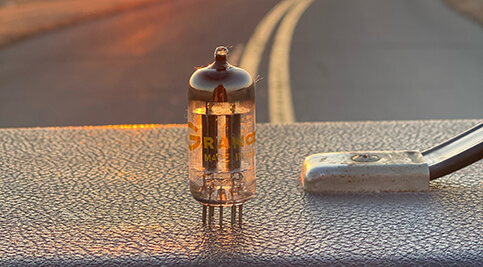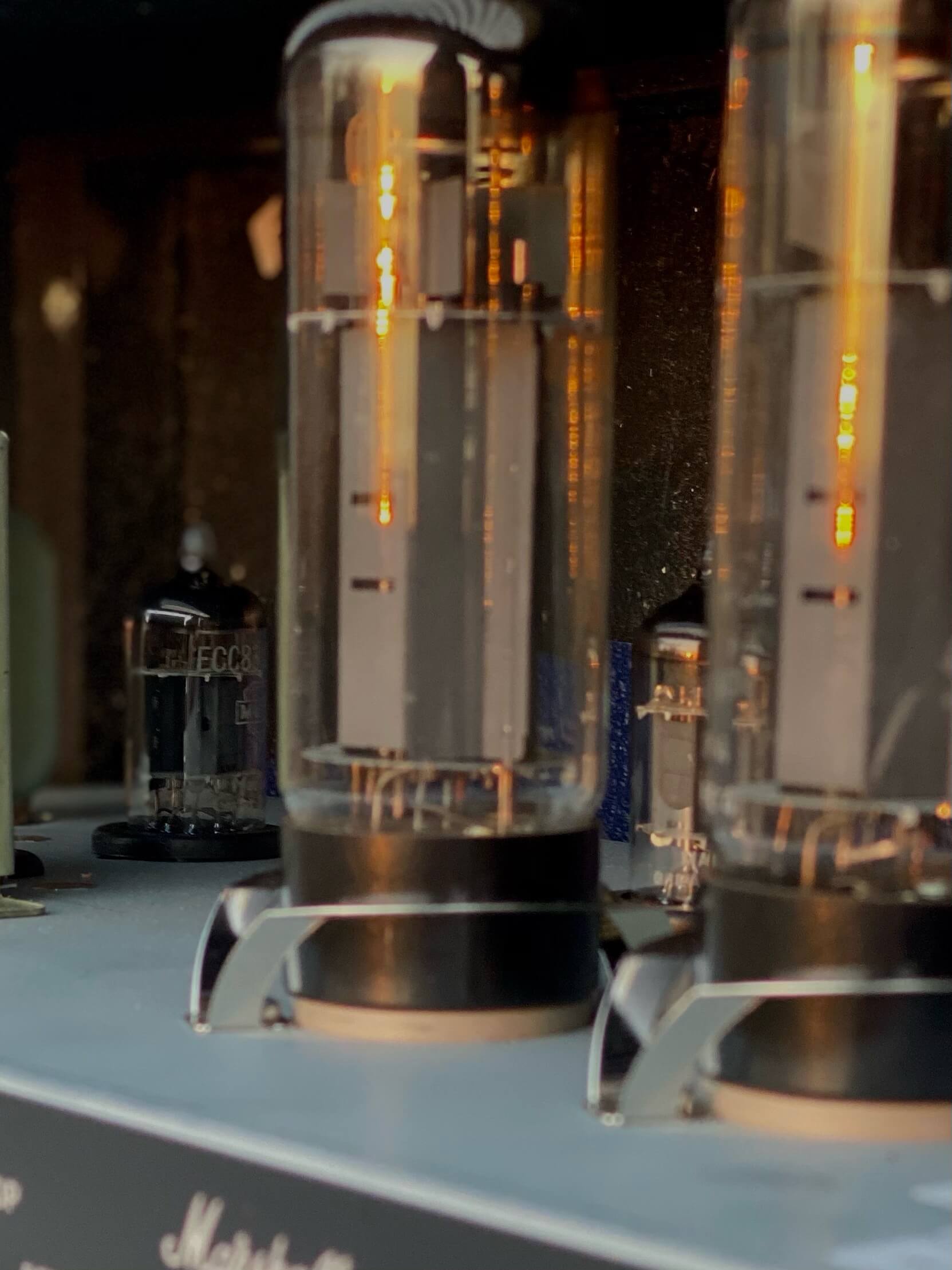Vintage Vacuum Tube Handling: Debunking the Glove Myth
When it comes to vacuum tubes, let’s face it… to most of us they are a complete mystery- how they work, how to handle them, what they are good for. If we told you right now that valves were alien technology, 20% of our readers might just believe it. Heck, even for true analog gear dorks like us, we are constantly learning new things about tubes and their application. That is why we are going to start a new “Vacuum Tubes Myths” blog series to help combat what we call “filament fables” and their tendency to distort the truth about these classic components with a dose of (electrifying) reality.
The handling of vintage vacuum tubes is a topic surrounded by myths and misconceptions. To set the record straight, here’s a succinct guide to dealing with these delicate yet robust pieces of technology.
Does Oil Ruin Vacuum Tubes? - FILAMENT FABLE #1

Despite what you may have heard, the oil from your fingers will not damage the glass of a vacuum tube or affect its performance. Vintage tubes, particularly those with ink labels, are delicate in other ways. The ink can easily come off—especially if it gets wet—so when handling or shipping these tubes, it’s wise to avoid touching the labeling. When opening a vintage box, do so with care to preserve its integrity, as collectors often value the packaging just as much as the tube. We see tubes with layers of dirt and grime caked onto them all the time, they work and will continue to work just fine, yet we normally clean them of course.
Remember vacuum tubes get hot, they are designed that way, so a little oil is not going to hurt anything. In fact, maybe that’s that delicious smell we get when those tubes we love heat up. Just kidding

Safety First: How to Handle Tubes Properly
Vacuum tubes, whether they are electron tubes or cathode-ray tubes, can handle the bumps and jolts of regular use but are not invincible. Given that they can get very hot, it’s imperative to let them cool down before handling, but otherwise gloves are only necessary if you are trying to keep your fingerprints off the tubes for cosmetic reasons. If your tubes are on display, it can be nice to have them all nice and shined up.
However, be warned. Tube amps can have A LOT of power running through them and be very dangerous. The other day we were testing a tube and it crumbled/imploded on us as we were taking it out of our trusty ’73 Fender Champ. The glass envelope of the tube simply broke in half as we were removing it, leaving the entire inside of the tube still plugged into the amp and exposed. Luckily the amp was not on, but having something happen like that with the amp on is a great way to get a nice shock or cut.
Lastly, if you are someone like us and has a ton of tubes laying around. Pro tip, don’t actually leave them lying around. We had a friend who is in the same business fall on a open box of vintage 5Y3GT rectifiers that he left on the ground and he took about 50 of them straight into his stomach and gut. Ultimately this left him hospitalized for over a weak with barium poisoning and he almost f***ing died.
Tips for Vacuum Tube Longevity and Cleaning
When it comes to everyday care, a gentle approach is key. Rocking tubes slightly while installing or removing them helps avoid damage. Gloves or a cloth can be used to keep tubes clean but are not necessary; if your hands are clean and dry, they are your best tool. If pins are dirty, we recommend using 000 steel wool or even a Dremel tool which is our go to for extremely dirty examples. Cleaning pins can save pins from corrosion and keeps system free from microphonics.
Before any maintenance, make sure the amplifier is turned off and unplugged, and be wary of stored electrical charge in capacitors. Store your tubes in a safe, dry place to protect them from accidents or extreme conditions.
Conclusion: A Respectful Approach to Vacuum Tubes
In conclusion, proper handling and maintenance will allow you to enjoy the rich history and continued performance of these electronic ancestors, whether they’re New Old Stock (NOS) or contemporary productions.
The world of vacuum tubes is as rich and deep as it is quirky and misunderstood. With our “Vacuum Tubes Myths” series, we’ll shine a light on the filament fables that cloud their legacy, ensuring these vital pieces of audio history get the respect and care they deserve. Stay tuned as we turn up the volume on truth, and dial back the distortion on myths, keeping your tube experience safe, sound, and spectacular. Explore the world of vacuum tubes with our tube buyers guide and our tube history blogs.


